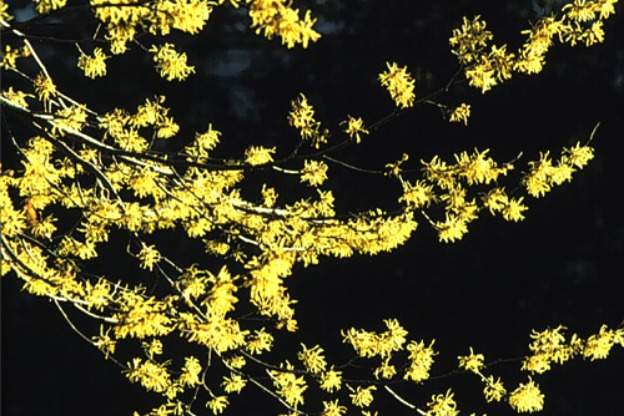
The autumn-blooming, Eastern native witch hazel (Hamamelis virginiana) bears golden blooms after the leaves have turned yellow and begun to fall. This is an unusual time for a shrub to bloom.
These shrubs are multi-stemmed understory plants that display oval-textured leaves with veining in a fishbone pattern. The bark has traditionally been used by steeping it in water to make an astringent, which Native Americans used to treat a variety of ills.
The forked branches of the shrub are used to locate underground water, a process known as water dowsing or witching. This gives rise to the common name of witch hazel.
There is also an early spring-blooming variety (H. vernalis), and both of these natives are found in damp woods from Nova Scotia to central Florida.
The autumn bloomer has larger flowers than the spring bloomer, but both types have extremely fragrant flowers with twisted petals. The most popular hybrid is ‘Arnold Promise', which has bright yellow blooms, and it makes a good specimen plant with orange foliage and large February blooms. It is the result of a cross between H. molis and H. japonica.
While witch hazels can grow in shade they need sun to bloom well in zones 4 to 6. They like moisture but are adaptable and can grow 8 to 20 feet and as wide with horizontal branches. Prune after they bloom to keep them more compact.









